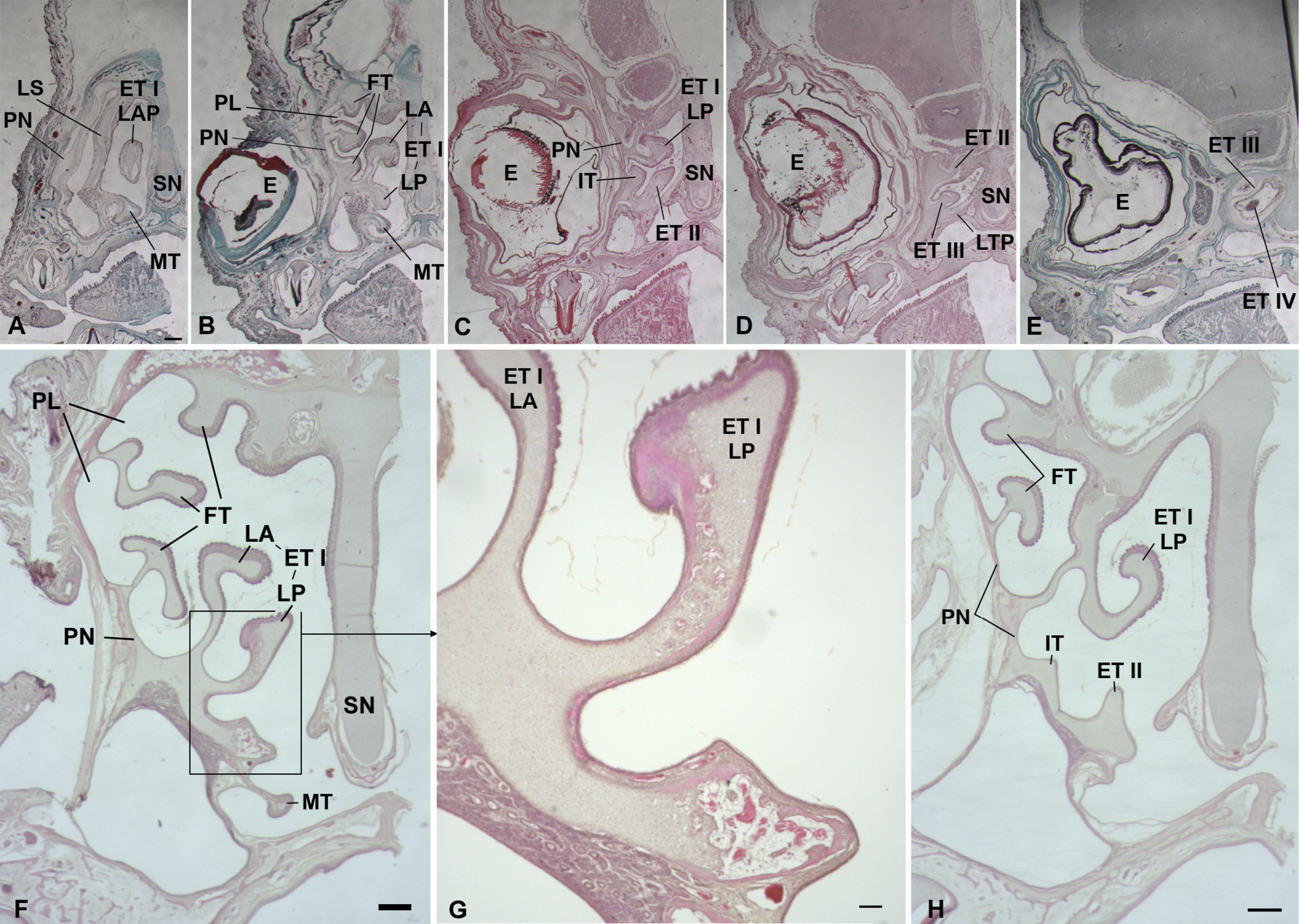
|
||
|
Histology series of two Lemur catta stages in coronal plane (rostral to caudal). A–E Mid to late fetal (DLC 6888). The entire nasal capsule is cartilaginous; F–H newborn (DLC 6834). A Most anterior projection of the anterior lamina (LA) of ethmoturbinal I (ET I), and the semicircular crest (LS) are shown; the maxilloturbinal (MT) is most ventral. B ET I has a LA and posterior lamina (LP) at this level. The pars lateralis (PL) is also shown, with three frontoturbinals (FT) within it. C At this level the LP begins to attach to the roof of the nasal capsule (i.e., the cribriform plate); ventral to it is ET II, and an interturbinal (IT) is between them. D Here ET II attaches to the roof, and ET III is ventral to it. E Most posteriorly, ET III attaches to the roof, and a fourth ethmoturbinal (ET IV) is seen. F–H In the newborn, the turbinals have started ossification as seen e.g., in the LP of ET I (G). Abbreviations: E, eye; LAP, processus anterior of lamina anterior of ET I; LTP, lamina transversalis posterior; PN, paries nasi; SN, septum nasi. Scale bars: 0.5 mm (A–E, shown in A only); 0.5 mm (F, H); 0.1 mm (G). |